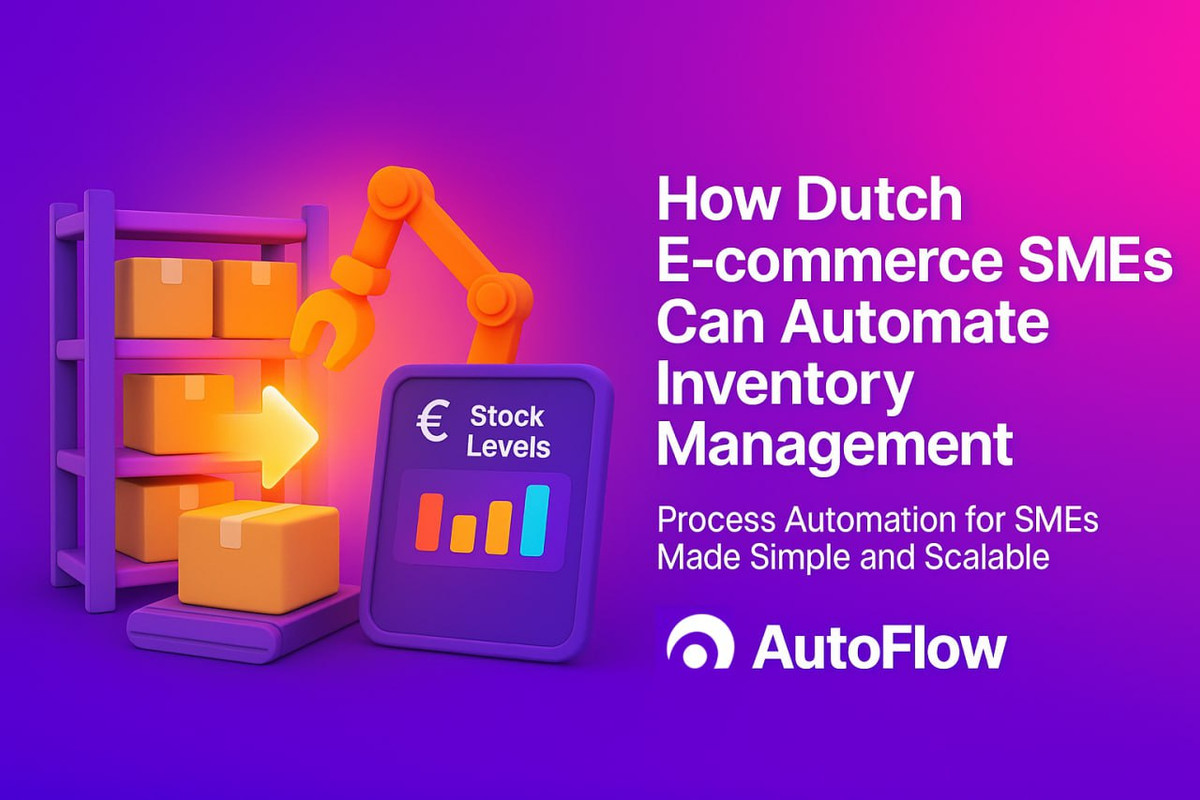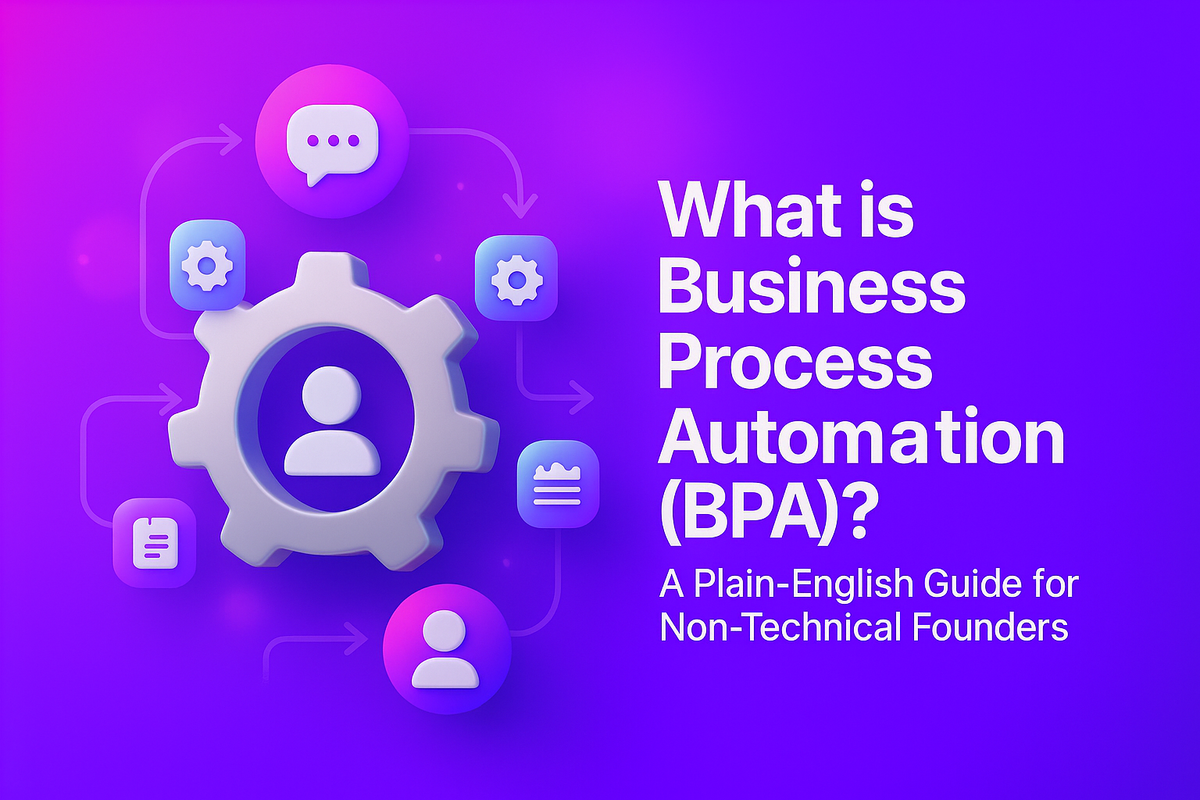
For any ambitious Dutch e-commerce business, the holiday season—from Black Friday through Sinterklaas and Kerst—is both a massive opportunity and a period of immense stress. As orders flood in from your Shopify store, bol.com, and Amazon.nl, the frantic, high-stakes ballet of inventory management begins. Did you sell a product you don't actually have in stock? Do you have enough of your best-seller to meet demand, or are you leaving money on the table?
This chaos is a direct symptom of manual inventory management. Relying on spreadsheets, guesswork, and periodic manual counts is like trying to navigate the Amsterdam canals in a rowboat during a storm. It might work when you're small, but it's a recipe for disaster as you scale.
Manual inventory management is no longer a necessary evil; it is a critical liability holding your business back. The solution is inventory automation—a systematic approach to managing your stock that uses technology to create a single, reliable source of truth. This isn't a luxury reserved for giants like Coolblue; it is an accessible and essential investment for any SME looking to compete and grow.
This guide will provide a practical, step-by-step roadmap for automating your inventory management, transforming it from your biggest headache into your greatest strategic asset.
The Hidden Costs of an Outdated System
Before diving into the "how," it's crucial to understand the "why." The costs of managing inventory manually are far greater than just the hours spent counting boxes. These costs directly impact your cash flow, customer satisfaction, and brand reputation.
📦 Stockouts & Lost Revenue
This is the most obvious cost. A customer lands on your product page, ready to buy, only to be met with the dreaded "out of stock" message. In the fast-paced world of e-commerce, they won't wait. They will click away and buy from a competitor, and you may have lost that customer for good.
❌ Overselling & Damaged Reputation
This is even more dangerous than a stockout. Your website says an item is available, a customer buys it, and only then do you realize you don't have it. You now have to cancel the order, apologize profusely, and process a refund. This creates a deeply negative customer experience, leading to bad reviews and irreversible damage to your brand's credibility.
💰 Excess Inventory & Trapped Cash
The opposite problem is just as damaging. Every euro tied up in products sitting unsold in your warehouse (or in a bol.com fulfillment center) is "dead capital." That is cash that could be invested in marketing campaigns, developing new products, or improving your website. Excess stock also leads to higher storage costs and the risk of products becoming obsolete.
⏱️ Operational Inefficiency & Wasted Time
Think of the hours your team spends on manual tasks: receiving goods, updating stock levels in multiple spreadsheets, performing physical stock-takes, and correcting errors. This is low-value, repetitive work that burns out your team and prevents them from focusing on high-impact activities like customer service and marketing.
The Anatomy of an Automated Inventory System
Automating your inventory isn't about buying a single piece of software; it's about building an interconnected ecosystem where data flows seamlessly between the different parts of your business. The goal is to create a single, central hub that is the undisputed source of truth for your stock levels.
Here are the core components:
The Central Hub (IMS or WMS): This is the brain of your operation. An Inventory Management System (IMS) or a Warehouse Management System (WMS) acts as your central database. All other systems read from and write to this hub. For many Dutch SMEs, a WMS like Picqer is a popular, highly effective choice.
Sales Channel Integrations: This is where the magic happens. Your central hub connects directly via API to all the places you sell:
Your E-commerce Store: Shopify, WooCommerce, Lightspeed, Magento.
Marketplaces: Critically, bol.com, Amazon.nl, Zalando, etc.
Shipping & Logistics Integration: The hub connects to your shipping software (like Sendcloud) or directly to carriers (PostNL, DHL) to automate the fulfillment process.
Purchasing & Supplier Management: The system connects to your supplier data to help automate the reordering process.
Barcode Scanning Technology: Handheld scanners are the key to ensuring the data in your system perfectly matches the physical reality in your warehouse.
A 5-Step Guide to Implementing Inventory Automation
Step 1: Establish Your Single Source of Truth
Your first and most important decision is choosing the software that will act as your central hub. You need a system that can handle the complexities of multi-channel e-commerce.
What to Look For: The single most important feature is the quality and breadth of its integrations. Can it connect seamlessly with your e-commerce platform, bol.com, and your preferred shipping carrier?
Popular Options for Dutch SMEs:
Picqer: A WMS built specifically for e-commerce businesses in the Netherlands. It's known for its user-friendly interface and excellent integrations with local platforms and carriers. It is often the perfect starting point.
Exact Online: A comprehensive ERP system that combines accounting, CRM, and inventory management. A great choice if you want to manage your entire business from one platform.
Brightpearl or Cin7: Powerful international players that offer robust features for larger, multi-channel retailers.
✅ Action
Audit your needs. If your primary pain point is warehouse efficiency and multi-channel stock syncing, a WMS like Picqer is ideal. If you need to integrate inventory with complex accounting and CRM, an ERP like Exact Online might be a better fit.
Step 2: Connect All Your Sales Channels
This step eliminates overselling forever. By connecting your Shopify store, bol.com seller account, and any other marketplaces to your central hub, you create a synchronized ecosystem.
How it Works:
1. You have 10 units of a product in your warehouse. Your WMS knows this.
2. The WMS tells Shopify you have 10, bol.com you have 10, and Amazon.nl you have 10.
3. A customer buys 1 unit on bol.com.
4. The bol.com API instantly tells your WMS: "Sale made! You now have 9."
5. Your WMS immediately updates the stock level and pushes the new quantity (9) out to Shopify and Amazon.nl.
✅ The Result
The entire process takes seconds, and it is impossible to sell the same item twice. You can sell confidently across multiple channels without constant manual adjustments.
✅ Action
Make a list of every single platform where you sell your products. When evaluating a WMS/IMS, confirm that it has a robust, pre-built integration for each one.
Step 3: Implement Barcode Scanning in Your Warehouse
This is the step that guarantees accuracy. Barcode scanners are affordable and bridge the critical gap between your digital data and your physical stock.
Receiving Stock (Goods In): When a shipment arrives from a supplier, instead of manually checking a packing slip, you simply scan the barcode on each product. The system instantly and accurately updates your stock levels. This eliminates human error at the very first step.
Picking & Packing Orders: When an order comes in, the WMS sends it to a picker's handheld scanner, telling them the most efficient path through the warehouse to collect the items. At each location, they scan the product barcode to verify they have picked the correct item. This simple scan can reduce your shipping error rate to virtually zero.
✅ Action
Integrate barcode scanning into your receiving and fulfillment processes. Your chosen WMS should support this and guide you on the right hardware to use.
Step 4: Automate Your Purchasing and Reordering
Now that your sales and stock data are accurate, you can automate the process of restocking.
Set Reorder Points: For each product, you can define a "safety stock" level. This is the minimum quantity you want to have on hand. When the system sees that your stock level has fallen to this reorder point, it can automatically take action.
Automated Purchase Orders: Instead of you having to remember to reorder, the system can automatically generate a draft purchase order and send it to you for approval. This ensures you never run out of your best-selling products simply because you forgot to place an order.
Demand Forecasting: More advanced systems can analyze your historical sales data to predict future demand. This helps you order proactively before big sales periods, ensuring you have enough stock to capitalize on the rush without over-investing.
✅ Action
Start by setting reorder points for your top 20% best-selling products. This "quick win" will have a major impact on preventing your most common stockouts.
Step 5: Automate the Shipping Process
The final piece of the puzzle is to streamline fulfillment by connecting your inventory hub to your shipping providers.
Integrated Shipping Labels: Once an order is picked and packed, a single scan can trigger the system to automatically generate the correct PostNL or DHL shipping label, based on the customer's chosen delivery method.
Automated Tracking Information: As soon as the label is created, the system sends the tracking number back to the sales channel (e.g., Shopify or bol.com), which then automatically emails the customer to let them know their order is on its way.
✅ Action
Use a multi-carrier platform like Sendcloud integrated with your WMS. This allows you to manage all your shipments from one place and automate the entire pick, pack, and ship workflow.
The True Payoff: A Scalable Foundation for Growth
Automating your inventory management does more than just save you time and prevent errors. It provides the strategic foundation for true e-commerce growth.
Data-Driven Merchandising: You have accurate, real-time data on what's selling, what's not, and what your profit margins are. You can make intelligent decisions about pricing, promotions, and which products to feature.
Effortless Scalability: An automated system can handle a sudden surge of 1,000 orders during a Black Friday sale with the same calm efficiency as it handles 50 orders on a quiet Tuesday. Your operations will no longer be the bottleneck that limits your growth.
Superior Customer Experience: With fewer errors, no overselling, and proactive shipping notifications, you build trust and loyalty. This leads to better reviews, repeat business, and a stronger brand.
Conclusion: Stop Counting, Start Growing
If you are still managing your e-commerce inventory with spreadsheets and manual updates, you are operating with a self-imposed handbrake. Every hour spent on these low-value tasks is an hour not spent on marketing, customer engagement, or strategic planning.
By implementing a central inventory hub, integrating your sales channels, and using technology like barcode scanning, you can build a resilient, efficient, and scalable operation. You can finally stop being a stock counter and start being a business builder.
🤔 Over to You
Feeling overwhelmed by the options and not sure where to start?
The first step is to understand your current process. Contact us for a free consultation, and we'll help you map your workflow and identify the single biggest automation opportunity for your e-commerce business.


